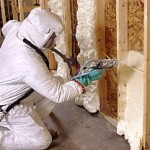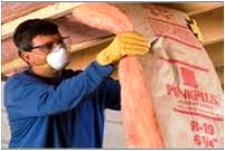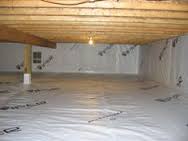 Recently I read a thread in a discussion group where a person posting was not going to use closed cell spray foam insulation in their pole barn due to safety precautions needed when installing. This got me wondering just how safe or unsafe installing fiberglass insulation is, so I started doing research.
Recently I read a thread in a discussion group where a person posting was not going to use closed cell spray foam insulation in their pole barn due to safety precautions needed when installing. This got me wondering just how safe or unsafe installing fiberglass insulation is, so I started doing research.
Fiberglass insulation, also sometimes known as glass wool, is made of tiny fibers of spun glass. As with any type of glass, threads making up fiberglass can break, leaving sharp edges. Contact with fiberglass fibers can cause miniscule cuts as well torturous itching. Best way to avoids cuts and itches is to wear proper protective gear when working with such insulation.
Wear a hat or hood when working with fiberglass to keep those itchy little fibers from getting into your hair. This is especially important if you are insulating very tall walls or ceilings. Any kind of hat will do as long as it sits firmly on your head and does not impair your vision in any way.
 Goggles and a dust mask are crucial safety equipment because those tiny glass fibers can irritate your eyes and lungs. Choose large safety goggles fitting securely all around your eyes, including sides. You do not need a heavy-duty filtration mask when working with fiberglass. A simple dust mask available at any hardware or home improvement store should provide an adequate barrier to keep fiberglass particles from being inhaled.
Goggles and a dust mask are crucial safety equipment because those tiny glass fibers can irritate your eyes and lungs. Choose large safety goggles fitting securely all around your eyes, including sides. You do not need a heavy-duty filtration mask when working with fiberglass. A simple dust mask available at any hardware or home improvement store should provide an adequate barrier to keep fiberglass particles from being inhaled.
Wear a disposable coverall to help protect your clothing because once glass fibers become embedded in fabric, it’s almost impossible to get them back out. Wear long sleeves and long pants underneath your coverall for extra protection. It is not necessary to tape coverall wrists and ankles.
Wear gloves when handling fiberglass. Open-weave knit gloves will not provide enough protections from tiny glass fibers, so wear gardening gloves or lightweight work gloves to protect your hands. Whether or not you wear gloves when working with fiberglass, wash your hands thoroughly even if you are only taking a short break. This will help you keep from inadvertently spreading fiberglass fibers to your face, hair or anything else you may touch.
Back in my Lucas Plywood & Lumber days, I shared an office with Al Mercer, who ran their insulation installation department. One trick I learned from one of his old time installers – apply baby powder or cornstarch before placing fiberglass insulation, on any skin apt to be exposed. These will fill skin pores and prevent itching.








